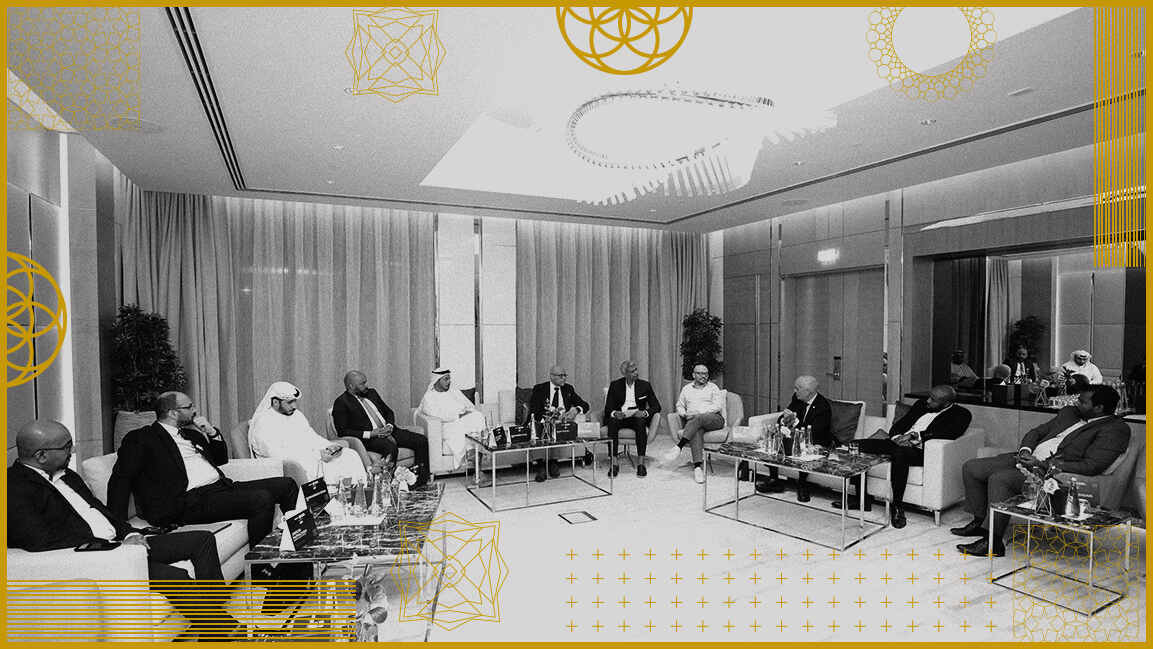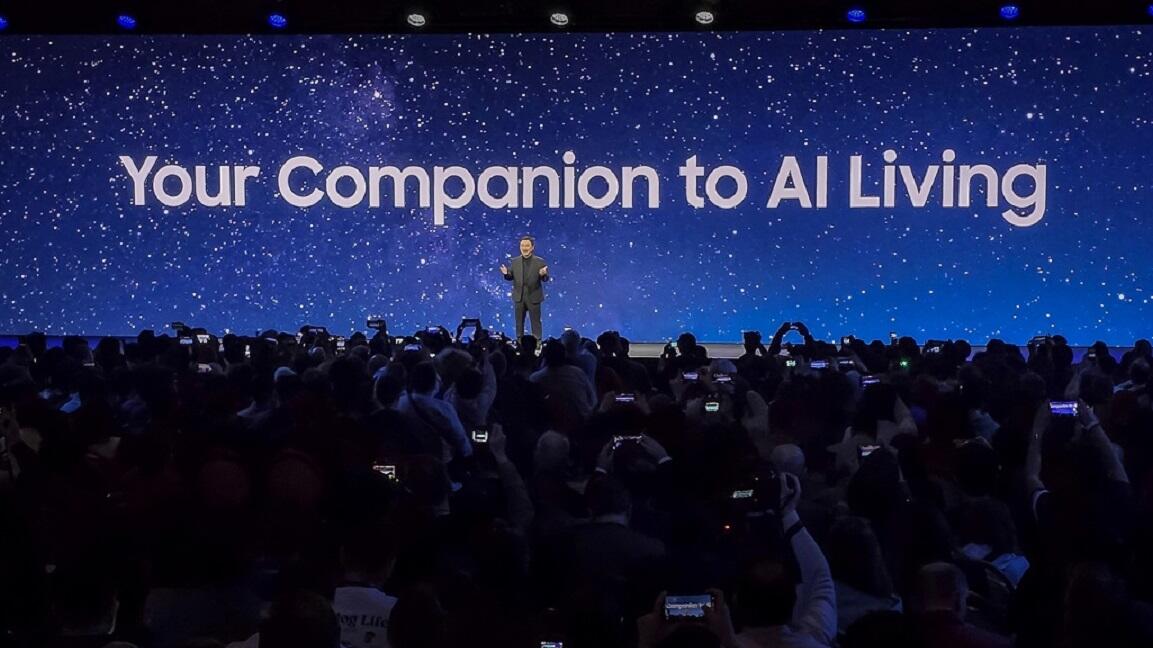How AI is shaping the future of human-centric design
Can trust and technology grow in the same system?

AI isn’t just about the future. It’s shaping the infrastructure of today. From hyper-personalized experiences to large-scale transformation, the Middle East and Asia are fast becoming the testing ground for what AI at scale really looks like. But with great power comes even greater complexity.
As organizations move at speed, the real advantage lies not in the sophistication of the algorithm, but in how intelligence is applied with purpose. Experience, trust, and creativity have become foundational. The most successful systems won’t be the ones that think faster, but the ones that understand better. Nowhere is this more visible than in how AI is crafting digital experiences that feel personal, fluid, and surprisingly human.
“We’re only beginning to see how AI will collaborate with humans to create smarter, more personalized experiences,” says Joseph Fletcher, VP of UX/Experience at Publicis Sapient ME & Asia.
Personalization, he says, is often viewed through the lens of content recommendations such as Spotify, Netflix, and YouTube. “But soon, digital experiences will start to mirror physical lives. Just as we shape our surroundings, our digital worlds will begin to reflect that same individuality.”
That shift is already beginning. Most digital environments, apps, devices, and websites still feel generic. But as AI agents, persistent memory, and immersive technologies advance, our digital presence is becoming more tailored, intuitive, and context-aware, more like our physical lives.
At the same time, the physical world is catching up. Storefronts, public spaces, and advertising are becoming more responsive and adapting in real time, driven by AI systems that don’t just react but anticipate. The boundary between digital and physical is beginning to dissolve.
In Saudi Arabia, this shift is unfolding at a national scale. Ashwaq Alshathri, Country Managing Director – Saudi Arabia at Publicis Sapient, adds that AI is a powerful enabler of Saudi Arabia’s digital transformation ambitions under Vision 2030. She believes, “We’re seeing significant momentum in how AI is embedded into national-scale projects across sectors like government services, tourism, healthcare, and energy. The Kingdom realized that AI is not just a tool. It’s becoming the engine behind smarter nations.”
What distinguishes Saudi Arabia, she notes, is how closely public and private sectors are aligned in executing digital-first strategies. Expectations are rising, particularly among the country’s young, digital-native population. Whether retail, travel, or financial services, customers expect seamless, intelligent engagement. AI is key in shifting brands from transactional touchpoints to deeply personalized, context-aware experiences that truly resonate.
HUMAN-CENTRIC AI DESIGN
As AI reshapes digital services, experience design is taking on a more strategic role. “Experience design is being embedded earlier in digital initiatives, with governments and private sector players recognizing that exceptional UX is a strategic differentiator in delivering frictionless, human-centric services that reflect cultural nuance,” says Srinivas Devulapalli, Senior Vice President and Managing Director at Publicis Sapient EMEA.
Driving this shift is the increasing integration of AI and data into design thinking itself. Organizations are adopting cognitive enterprise design systems, frameworks that merge creativity, intelligence, and scalability to create personalized, intuitive experiences. UX today bridges data-driven insight with operational execution, going beyond aesthetics and usability to shape strategic impact.
According to the Oxford Insights Government AI Readiness Index, governments leading in AI adoption prioritize user-centric service design, treating digital experience as a core enabler of public sector transformation.
Fletcher says trust, emotion, and usability are essential to designing meaningful AI experiences, each with unique challenges. Trust is built through transparency and consistency. Companies should aim to offer both privacy and seamlessness. Emotion depends on the use case and AI personality. What works for a therapy bot won’t suit a grocery assistant. Usability is the most complex: while older systems required users to adapt, AI flips the model by adapting to natural human language.
Over time, he adds, “These three elements will become increasingly intertwined. Usability will be driven by how well the system gets to know each individual. The more it understands me, the more intuitive it becomes and the more I grow to trust and even feel emotionally connected to it.”
While trust, emotion, and usability may begin as separate goals, in practice, they reinforce one another, enabling richer, more human-centric experiences.
Alshathri says the next leap for AI will be national-scale transformation.
From AI-powered tutors to smart infrastructure, the Kingdom is moving beyond automation to enhance the quality of life. With bold vision and agile policies, it’s building a new kind of human-AI partnership that could redefine how people live and thrive in a digital society.
According to PwC (Strategy& Middle East), generative AI could generate up to $23.5 billion in annual economic value across the GCC by 2030. Saudi Arabia is expected to contribute $12.2 billion, followed by the UAE at $5.3 billion and Qatar at $2.6 billion. These figures highlight the strategic and transformative nature of Saudi Arabia’s investment in AI.
Scaling AI across the GCC takes more than piloting isolated use cases, notes Devulapalli. It requires placing AI at the core of business and national transformation agendas. That starts with clearly defining the value, whether it’s enhancing citizen services, building smarter infrastructure, or driving revenue growth.
But ambition alone isn’t enough. Many bold strategies are held back by outdated systems. Legacy modernization must go hand-in-hand with innovation to ensure the underlying tech stack can support AI at scale.
New AI-driven software development tools are changing that equation. Through automated testing, faster deployment cycles, and continuous feedback loops, organizations can accelerate delivery, enhance quality, and adapt in real time, compressing transformation timelines from years to months.
PEOPLE’S READINESS FOR AI
The first step is understanding what humans and AI each do best.
Fletcher explains that people excel at storytelling, emotional connection, and building brand affinity. We operate at lower bandwidth, primarily through language, but with far greater emotional depth. AI, by contrast, processes vast amounts of data at high speed. It depends on structured data and exposed schemas, and doesn’t engage with brands like people do.
One of the biggest challenges in change management will not be upskilling, but rather unlearning. As code and technology become increasingly commoditized, creativity will emerge as the most valuable skill. AI may store more knowledge than any individual, but humans apply that knowledge in original, strategic ways to drive tangible business outcomes.
The best path forward is to understand the strengths of humans and machines and design systems that bring out the best in each.
Driving AI-led transformation also requires leadership that balances bold ambition with emotional intelligence. It’s not just about deploying new technology, says Devulapalli. It’s about guiding organizations through profound change and addressing the emotions that inevitably surface along the way.
As AI becomes more central to business, leaders must recognize and respond to real concerns around job security, fair compensation, and the fear of being replaced.
Great leaders view AI as a catalyst, not a threat, positioning it as a partner that elevates roles and amplifies human potential. They inspire teams to embrace AI as a tool for growth. But transformation isn’t linear. Early setbacks are expected, and success depends on patience, strategic agility, and sustained trust.
It also depends on building strong foundations, clear operating models, effective governance structures, and talent strategies that align AI with measurable business outcomes. Equally important is cultural agility: the ability to respond to local nuances while staying aligned with a global vision.
There’s strong momentum in the Kingdom to build a future-ready talent ecosystem, says Alshathri. Programs like Maheerah invest in women’s leadership in tech and marcomms, while universities and government initiatives increasingly focus on STEM and AI literacy. She adds, “We’re seeing the emergence of a young, ambitious generation eager to lead in AI and digital innovation.”
AI IS MOVING FROM STRATEGY TO EXECUTION
Devulapalli believes AI adoption in the Middle East is accelerating thanks to bold national visions, government mandates, and rapid infrastructure investment, especially in countries like Saudi Arabia and the UAE.
According to the Oxford Insights Government AI Readiness Index, the UAE ranks 12th globally and first in the MENA region, highlighting the region’s strategic investments in AI capabilities, infrastructure, and governance.
Here, governments are not just supporting AI initiatives. They lead them, embedding intelligent systems into core sectors such as citizen services, healthcare, tourism, and education.
“This momentum,” he explains, “stems from a need to deliver frictionless, scalable experiences for growing, tech-native populations, especially Gen Z and Gen Alpha, who expect efficiency and immediacy.”
In more mature markets across the region, AI and data are increasingly being leveraged to drive hyper-personalization in public services, improve health outcomes, optimize investment strategies, and support broader efforts to diversify non-oil GDP.
Yet, despite this progress, many businesses still treat AI as a tactical fix rather than a strategic growth driver. It’s often disconnected from broader transformation goals and held back by legacy systems, rigid structures, and unrealistic expectations of instant results.
A Deloitte–MBZUAI report finds 80% of regional businesses feel pressured to adopt AI, yet nearly 50% lack sufficient talent or infrastructure to scale. Like every major revolution, industrial or digital, AI demands patience and persistence. True success comes from embracing continuous iteration, improvement, and scaling. Human-led models alone are no longer enough to stay relevant. Businesses must redefine value creation with AI at the core.
Alshathri adds that Saudi businesses are now taking tangible steps to embed AI at a strategic level. “We’ve moved well beyond experimentation. Saudi businesses are embedding AI into the core of their operations, not as isolated use cases, but as part of their enterprise-wide transformation agenda,” she says.
She notes that the focus has shifted toward building the right architecture, governance frameworks, and talent models to scale AI responsibly. Companies are investing in agentic AI systems, evolving their data strategies, and partnering with technology experts to ensure AI becomes a long-term driver of value, not just a one-off initiative.
“The ambition in the Kingdom is bold,” she adds, “and it’s backed by a strong commitment to capability-building and sustainable innovation. Companies that fail to integrate AI into their strategy risk losing both relevance and competitiveness.”
NEXT PHASE OF AI-POWERED DESIGN
Fletcher believes the Middle East stands apart from any other region in its ability to envision and act on the future. You can already see this in initiatives like the UAE offering free access to ChatGPT Pro for residents and Saudi Arabia’s investment in HUMAIN.
The next big shift, he says, will be large-scale, country-wide adoption of AI, likely as a global first. “We’ll see AI-powered tutors, healthcare, and infrastructure rolled out at scale. This is a region actively building a better quality of life through artificial intelligence.”
As AI systems grow more advanced, he adds, they will hold more knowledge than any single human can ever retain. Our value will no longer lie in the accumulation of knowledge, but in our ability to apply it creatively. “Creativity will become a desirable trait as AI becomes ubiquitous within companies.”
Devulapalli reinforces this view, noting that the next major shift is the operationalization of AI at a national scale where entire countries, not just companies, embed AI into every layer of digital infrastructure. In the GCC, particularly in Saudi Arabia, AI is progressing from isolated pilots to full-scale integration across various sectors, including healthcare, education, government services, and tourism.
But the conversation is no longer just about deployment. “Leaders are no longer asking, ‘How do we deploy AI?’ but rather, ‘How do we ensure it delivers sustained business and societal value?’” he explains.
This is where the cognitive enterprise design system proves essential. It helps organizations shift from experimentation to scaled implementation, enabling AI solutions that are both intelligent and human-centric.
Design isn’t a final layer but rather a strategic foundation that connects data, AI, and user experience to power long-term transformation.









































